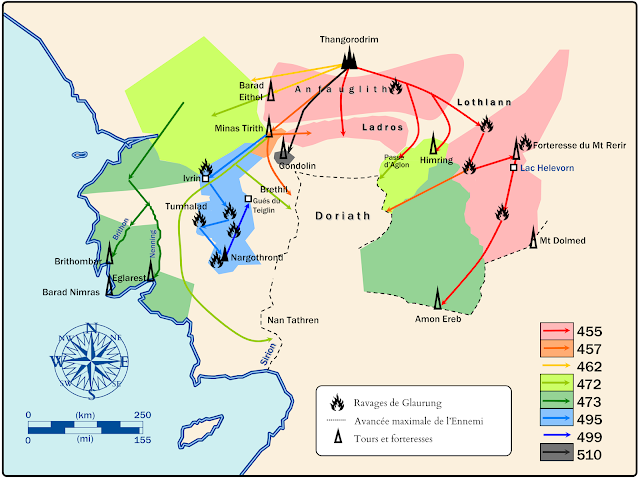(cliquez sur l'image pour l'agrandir)
Voyages en Beleriand (Atlas du Beleriand - Carte 10)
Le Beleriand était divisé en deux grandes parties Est/Ouest par une barrière géographique consistant en régions périlleuses, sauvages ou gardées. Cette barrière, symbolisée dans cette carte par la couleur rouge, s'étendait de Dor Daedeloth au nord jusqu'à Taur-Im-Duinath au sud.
Peu de chemins traversaient cette "barrière centrale". Ces chemins constituaient les grandes routes à travers le Beleriand. Ils furent utilisés par les Nains pour le commerce, les Hommes durant leurs migrations, et quelques elfes courageux, comme Galadriel ou Finrod. Celuci-ci était connu pour voyager beaucoup.
La première série de 10 cartes est maintenant complète !
***
A propos de l'Atlas du Beleriand
Cet Atlas est une série de dix cartes (ou plus!) concernant la géographie, l'histoire et la géopolitique dans le Beleriand, le territoire des évènements du Silmarillion.Cette carte a été créée pour illustrer un essai dédié à la géopolitique en Beleriand publié sur le site JRRvf. La carte a été améliorée et ensuite publiée sur Deviantart.
***
Détails techniques
Deux polices de caractères ont été utilisées : Franklin Gothic Medium et Cardo de David J. Perry.***
Bibliographie et référence
- K. W. Fonstad, The Atlas of Middle-Earth, revised edition, Houghton Mifflin, 1991




